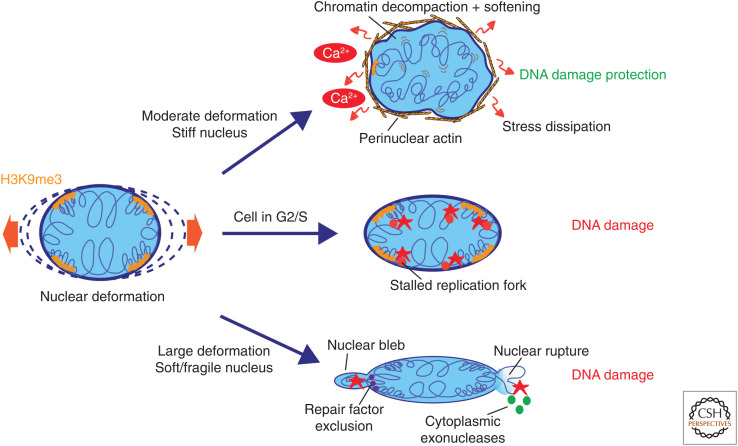Figure 3.
Mechanisms of nuclear deformation–induced DNA damage and damage protection. The impact of nuclear deformation on genome integrity depends on the mechanical properties of the nuclear lamina and on the cell cycle state of the cell. Cells with stiff nuclei respond to deformation by reducing lamina-associated H3K9me3 heterochromatin in a Ca2+-dependent manner, which increases chromatin mobility to facilitate dissipation of the mechanical energy to prevent DNA damage. Simultaneous formation of a perinuclear actin ring prevents further nuclear shape and volume changes. Nuclear deformation in cells in G2/S phase cause replication fork stalling and subsequent DNA damage. Particularly large deformations in cells with soft/fragile nuclei can cause blebbing and bleb rupture. Resulting exposure of herniating chromatin to cytoplasmic exonucleases triggers DNA damage. Exclusion of repair factors from blebs may hamper damage repair.

